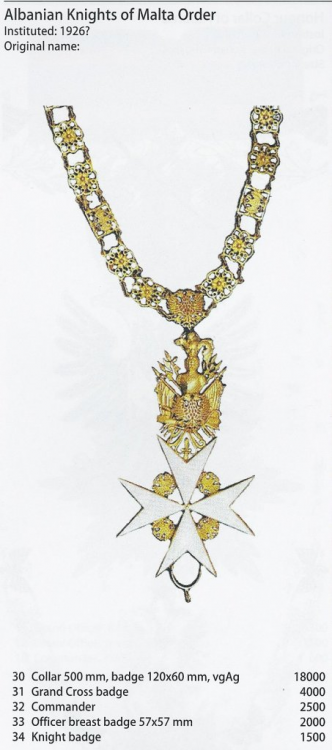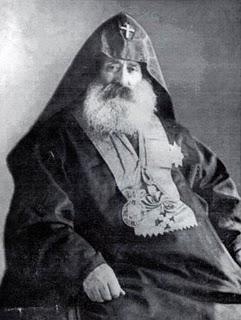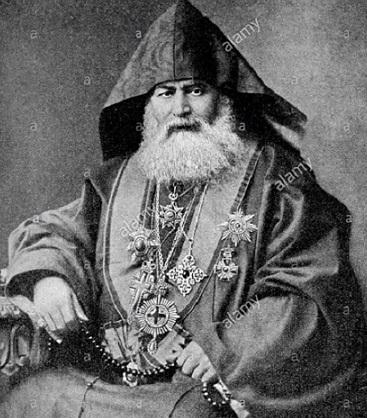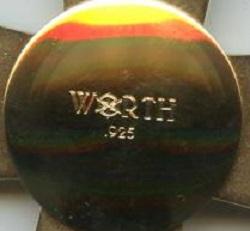
922F
-
Posts
1,384 -
Joined
-
Last visited
-
Days Won
7
Content Type
Profiles
Forums
Blogs
Gallery
Events
Store
Posts posted by 922F
-
-
Try the Palais Royale with several retail establishments and Le Louvre des Antiquaires where you will find a few shops as well, both near the Louvre Museum. Relatively high prices--shops in Palais Royale sometimes have old ribbon stock. Your flea market success is hard to determine both in terms of what you may [or not] find and prices. I'd visit the Marché aux Puces de St Ouen (early Saturday), Porte de Montreuil (7 AM Saturday) and often overlooked Porte de Vanves (7 AM Saturday or Sunday). There were a couple of shops along Rue de l'Universite but don't know whether they're really worthwhile. Some of les bouquinistes who have stands along the Seine have medals and both Arthus-Bertrand [6 place Saint-Germain des Prés, Paris, 75006] and the Monnaie de Paris sell current production items. Metro and public bus links make all of these relatively easy to get to and traverse among. Be sure to wear comfortable shoes, and pay in cash for best prices at flea markets. Upscale shops, Bertrand and the Monnaie generally do not bargain but it never hurts to ask.
If you have time, visit the Hôtel des ventes Drouot [9, rue Drouot 75009 Paris] which offers both estate and specialized collectable item auctions.
Ask people who you meet at such places whether they know of any other shops or the sometimes hard to access collectors' meetings. Opportunity awaits!
0 -
Stitching seems sloppy & ribbon wear maybe inconsistent? I'd blacklight this.
0 -
Artan,
Good to hear from you and thanks for your image! In an on-line video of the event, thought I saw someone who resembles you at the State Dinner. Some of the cases have the recipient's name written on white sticky tape fixed to the outside case bottom.
0 -
Hi Bob,
I think this is a modern production (possibly post WW2). The red enamel eagles of the trophy ate taken from the grand star of Scanderbeg Order Italian period (1940). The four eagles between the cross arms are taken from the grand star of the Besa Order Italian period (1940). Albania do not use decorations of cross shaped, because is a many-religious country.
Regards,
Artan
Greetings,
Thanks to all contributors for their efforts on this thread.
An early 1980’s Graf Klenau auction catalog contains the earliest known [to me] image of this type insignia identified as belonging to an Albanian langue of the Roman Catholic Order of Malta. The catalog illustrates both a collar and a pinback breast badge. Supposedly Count Ciano instigated formation of this langue as a component of his campaign to become the Albanian head of state in 1939. When that initiative failed, the project did too.
I contacted the Roman Catholic Order of Malta at least five times in the 1980’s-‘90’s, including personal visits to Via dei Condotti, regarding this purported langue. Authorities there dismissed the possibility of an Albanian langue’s existence even as a proposed concept, let alone acknowledged existence of an insignia description. Nonetheless, I have seen three collars, a neck badge or two and at least five pinback crosses in this style. I cannot opine whether they are sample pieces, fabrications for eager or avaricious or gullible collectors or represent an as yet unknown different still-born project.
If the Roman Catholic Order of Malta still denies a ca. 1939 Albanian langue proposal then these are almost certainly fantasy pieces. Another possibility may be that some pseudo Order or association discovered the design and proceeded to have insignia made for their own ends. I suspect that’s the raison d’etre for the single headed black enamel Scanderbeg type insignia [Bob's post 25 above]. An alleged Scanderbeg family member of the branch resident in Italy for the past 500 or so years instituted at least three decorations in the 1870’s-90’s. This could be another such creature.
Bob’s post 15 Honor Collar of Albania image closely tracks with examples manufactured by Bertrand for Leka I in the 1970’s-‘80’s.
The firm 'Worth' manufactured the Leka II - Elia marriage medals shown in Bob's post 24 above [note "W" stamped on suspension ball reverse]. Cased exemplars destined for wedding guests were positioned at their place settings during the State Dinner offered by the Albanian government following the marriage ceremonies. The cases may be seen there in internet images of the event; at one point a guest handles one but the images are not clear enough to distinguish details. A very few persons having strong ties to the newlyweds or who offered them superior services who did not attend the wedding or dinner also received cased medals.
0 -
I formerly owned a royal Greek Redeemer grand cross, a Lion & Sun grand cordon, and Osmanie & Medjidjie grand cordon sets with sash arranged for wear around neck. These reputedly came from an 1880-1910 group of awards formerly belonging to an Armenian Patriarch. Displays at the Armenian Patriarchate offices in Jerusalem and Istambul include many of former Patriarchs wearing Grand Cross/Cordon sashes of various nations worn in this fashion. I attach three images for your information
Further many images of other religious leaders, especially those dating from the 1860’s to 1920’s, usually Eastern Orthodox, Coptic, and Bektashi leaders, show the same format sashes. Besides the Orders cited above, these include various Imperial Russian, Bokharan, Serbian and other decorations. Somewhere I have an image of an Albanian Bektashi leader wearing a Zog Era Scanderbeg sash around his neck--a 1942 image of a Roman Catholic Bishop [?] wearing the Italian varient Scanderbeg Grand Cross set depicts him wearing a sash in the usual cross chest manner.
The question of whether the broad ribbon around the neck were/are official sanctioned styles or local customary usages remains unknown to me.
0 -
Wonderful finds! Lille usually had 'good pickings'!
0 -
Nick, You've an Austrian Fatherland Front Badge (Vaterländische Front Mitgliedsabzeichen). Some claim there are political party membership pins while others say they had several grades representing different responsibilites in the party. Some are just the center device surrounded by the party's motto, some have an open wreath surrounding the cross, some have white enamel edged with red crosses, some are the same with devices between the arms, of the latter types some lack the center roundel..... Many types, seem to recall an early BDOS [or similar] journal contains an article describing them.
On-line sources provide more info on the party and it's insignia.
0 -
The apparent cross arm size and placement may suggest Zvonimir and the piece seems to be white enamel. However, I do not see the stylized twist design on cross arms Zvonimir badges display and the center seems too large [extends to edge of cross arm divergence]. Further, Matthew mentioned the cross arm taper which does not conform to Zvonimir format.
Did von Trotha have a Bulgarian connection? Size of the center, cross arm taper, apparent sword blade between cross arms plus glint shape in center reminds me of Bulgarian Military Bravery Order 3rd class, lst grade.
0 -
Thank you for your efforts Gordon. Do you have a web reference to the DNW bar description?
Sadly and most frustratingly, I have tried to locate George V Silver Jubilee and George VI Coronation foreigners' award rolls for years without success. For the George V Silver Jubilee I've found one French group mounted on a bar and 2 Italian unmounted groups [and now maybe Waßner's mounted group] with it. Regarding the George VI Coronation medal I know of 2 Italian groups [one mounted and one unmounted], a Romanian group [bar mounted] and a Bulgarian group [unmounted] with this medal. I’ve names for none of the original owners.
By the way--after several attempts to ID the award hanging under Waßner's PLM finally discovered it is a Peru Order of the Sun perhaps awarded in 1931-3 while he commanded Karlsruhe during a naval training cruise courtesy call in Callao . He also received a Portuguese Red Cross Medal for Merit [date unknown to me] which appears just before the putative George V Silver Jubilee medal.
0 -
1812, in your post 27 is that a book on Imperial Korean awards next to the Thai book? Have you any details baout it? Thank you!
0 -
Egypt Republic Version al Kamal Grand Cordon in case -- probably marked by Bichay of Cairo [look at star/badge reverse and inside case lid]. These are rare on the market -- I cannot recall a similar set sold since 2008 [Tammann auction] when one went for 2,000 Swiss francs + 20% commission about 1650 GBP or 2200 USD total. Possibly worth at least that much now.
0 -
Take a look at the back; it may have the maker's name inscribed or embossed. That would help increase the price. Prices Sampo quotes would be OK if it includes the protrait. There's an uncased set on eBay now with no bidders at $100.
0 -
Rusty--A Worth hallmark & silver fineness mark image follow below. Worth had a website, now unavailable, that imaged an Ismail star and Mohammed Ali set at least. You may be able to access via wayback or similar service. Worth has/had offices or correspondents in Paris, Lisbon, Geneva, and elsewhere.
I am not sure whether Eng Leong or Royal Insignia actually made Ismail insignia with their proprietary hallmarks or acted as sub-contractors and used the direct contractor’s marks if any. I am unclear as to which firm actually made the pieces because Royal Insignia 'sprang' from Eng Leong. Eng Leong uses "ELM" and reportedly "ELMI" as their hallmark. Royal Insignia marked some item with their name in quasi script [example below]. Both firms usually include a silver or gold fineness mark on their products.
 1
1 -
Spink’s shorthand description may have misled...after all, their original description mispelled the supplier/manufacturer's name! JOMSA Vol 68, number 5, pp 43-44 describes Nishan el-Noor [Order of Light] insignia & cases. The case outer lid [illustrated there] bears the Royal Egyptian coat-of-arms above the supplier/manufacturer information. Some cases have this same material centered on the inside of the lid. Worth, the insignia supplier, informed me that Mohammed Ali cases have similar markings. Usually Worth provided stars and badges have Worth's trademark on the reverse center disk. Sometimes Worth items have a silver content stamp--I do not know whether their Royal Egyptian pieces bear such identifiers.
ELM and Royal Insignia both often, but not always, use their proprietary hallmarks and a silver fineness indicia stamp.
1 -
King Peter II of Yugoslavia established an honor titled Knight Bachelor of Yugoslavia in 1965 or 1966 while living in exile in Milwaukee, Wisconsin, U.S.A. The King reportedly created about 100 Knights Bachelor between 1966 and his death on 3 November 1970 in Denver, Colorado, U.S. A.
I seek information about this honor including the statutes, lists of persons decorated with the award, a description of the insignia, and related information.
Please help!
0 -
Both of these appear to be Portuguese Republic [1910-present] awards. There may be maker or silver fineness marks on the badge suspension lugs--I cannot see them clearly. From workmanship and absent ability to read the marks [if they exist], I'd place Christ at 1960's-'90's and Avis at 1990's-present.
Does this information answer your questions?
Jeff is a very highly regarded, well respected dealer who stands behind his material.
0 -
I bought one of these without case in about the same condition for nearly 70 euro equivalent in 2004 because it was part of a group. Can’t recall any recent sales although an auction, perhaps Gallerie Numismatique?, may have offered one in the past several years…do not remember opening bid or sales price.
Maybe a Vatican State collector can offer a better idea…
0 -
Case lid illustrates arms of Pope Pius X (2 June 1835 – 20 August 1914); reign August 1903 to death in 1914. That should enable you to fix a time period. This type appears on the collector market infrequently, usually in an Austrian milieu. Van Der Dussen may provide expanded information. Sometimes described as a 'Knight Cross'. What are the hallmarks? Austrian?
What exactly do you want to know?
0 -
Great item! Marks look like those of I. Oseritskij [maker] and 84 [silver]...
0 -
Simply an amazing major coup!!! Strongly agree that Rick would have been overjoyed!!!
0 -
Judging mostly by the badge [lowest one, hangs almost beside star] this looks like a civil division set. Take into consideration my poor eyesight combined with the image size & wash-out, however.
0 -
Noticed Bophuthatswana's coat of arms on medal reverses in Post 10 above. Bophuthatswana's national motto, Tshwaraganang Lo Dire Pula E Ne [Tswana for "If we stand together and work hard we will be blessed with rain"] appears as the coat of arms motto underneath the blason.
This caused me to revisit the entire thread where for the first time I saw what looks like an inscription embossed into the star motto ring Post 6 above. It seems more visible from the reverse but the obverse image shows enamel 'thins' at the embossing's location. Sometimes gouges or lines are made in metal before enameling to ensure that the enamel bonds more securely to the metal. This technique is known as Champlevé. It may be that whatever is embossed into the motto ring was so intended. However, I seem to make out letters along the lines of "AFRIKAANCE--" on the upper half and "AFRICA--A" on the lower part. [Dashes indicate unclear characters.] This text, if that's what it is, seems unrelated to Bophuthatswana's national motto. Maybe it's the manufacturer's mark or indicates that the same die was used for another item. Perhaps the original design included a motto ring legend?
Any ideas?
0 -
This man has been identified as a son of King Toffa II of Porto Novo or as a Marcus Garvey disciple...neither with any conclusive proof. He somewhat resembles Toffa's son Prince Adjiki, sent to Paris as Ambassador in the 1880's.
The decorations suggest that neither of the supposed IDs are correct.
0 -
Cursory search of Silver Star multiple recipients lists reveals a scant handful of supposed 9 time winners, none named Delaney. Looks like at least 2 ribbon mounts here. Some Vietnamese ribbons apparently not in correct rank order. Can't make out shoulder tab insignia--which might be an ID clue.
0




.jpg.40ac921608699c31333a8be60b872e0c.jpg)


Unknown award Please help
in Germany: Third Reich: Wehrmacht Medals, Decorations & Awards
Posted
KVK1x might be most probable but center disk seems very pronounced and thicker than most KVK1s. What about simple KVK 1 [no swords]? Unlikely for an Admiral.....
I tend to think that it's not a Zvonimir for reasons outlined above.